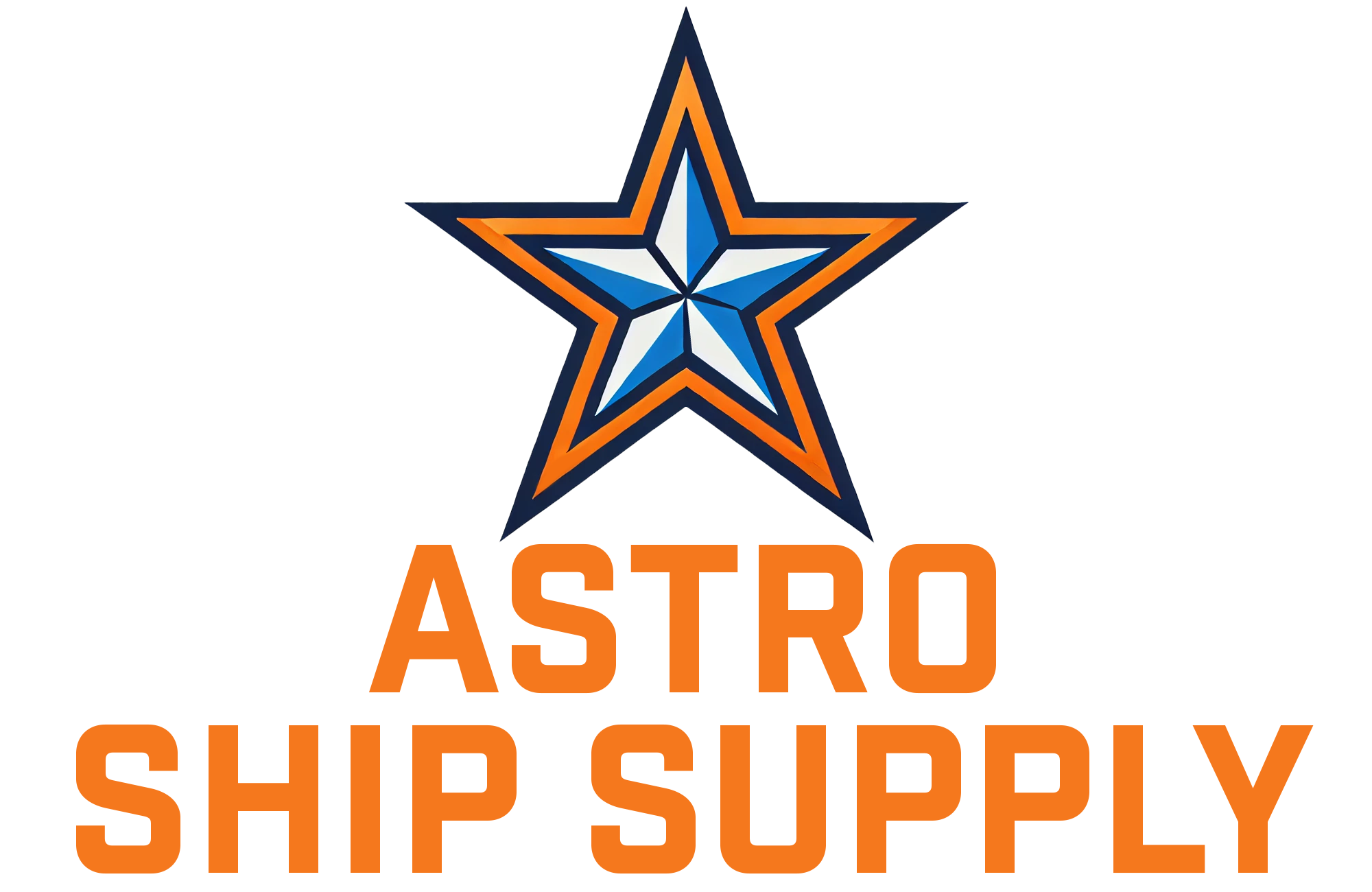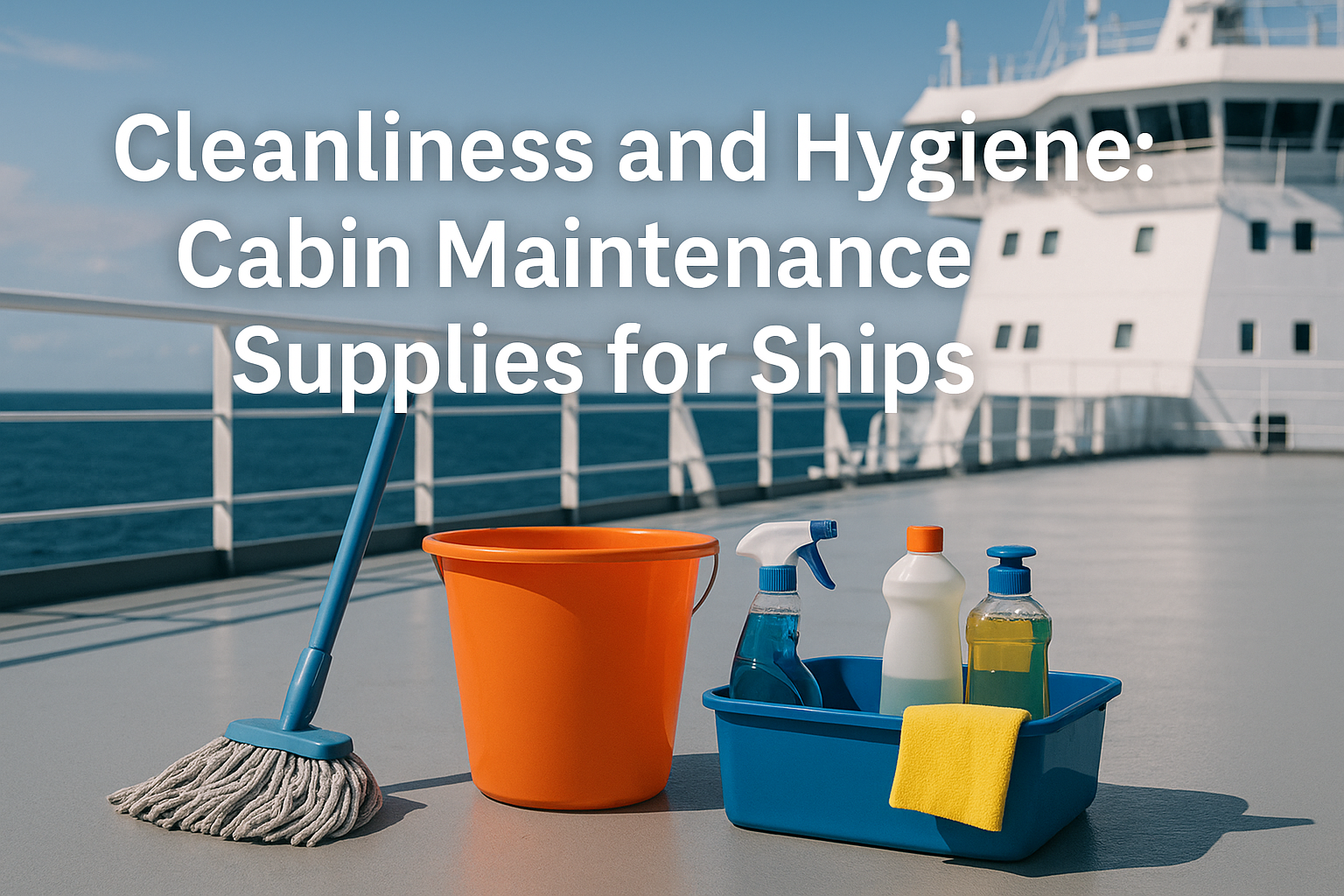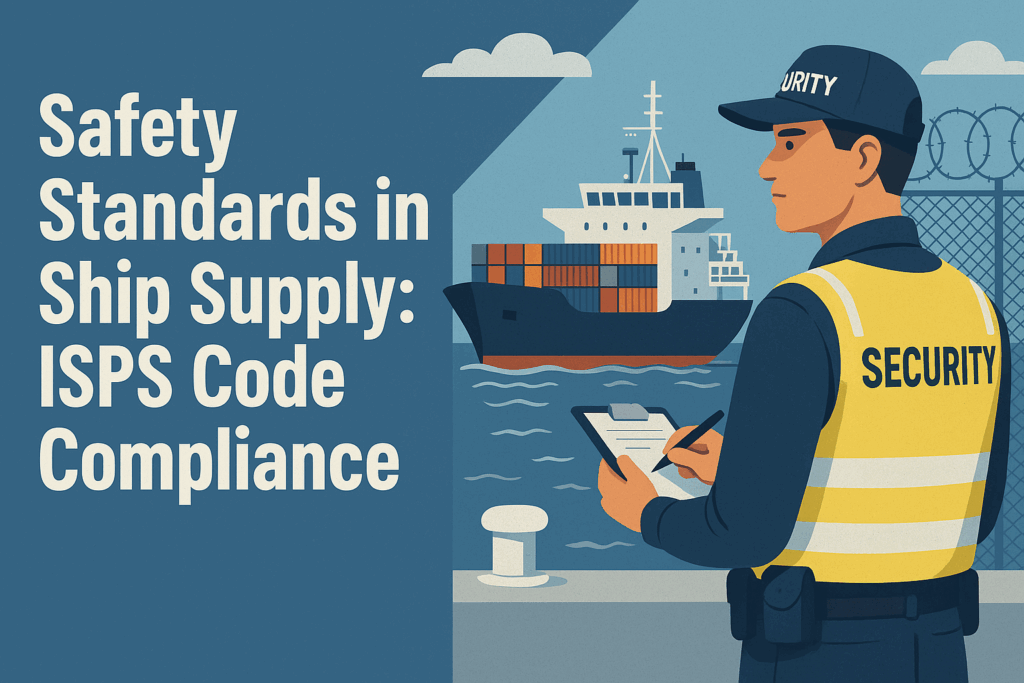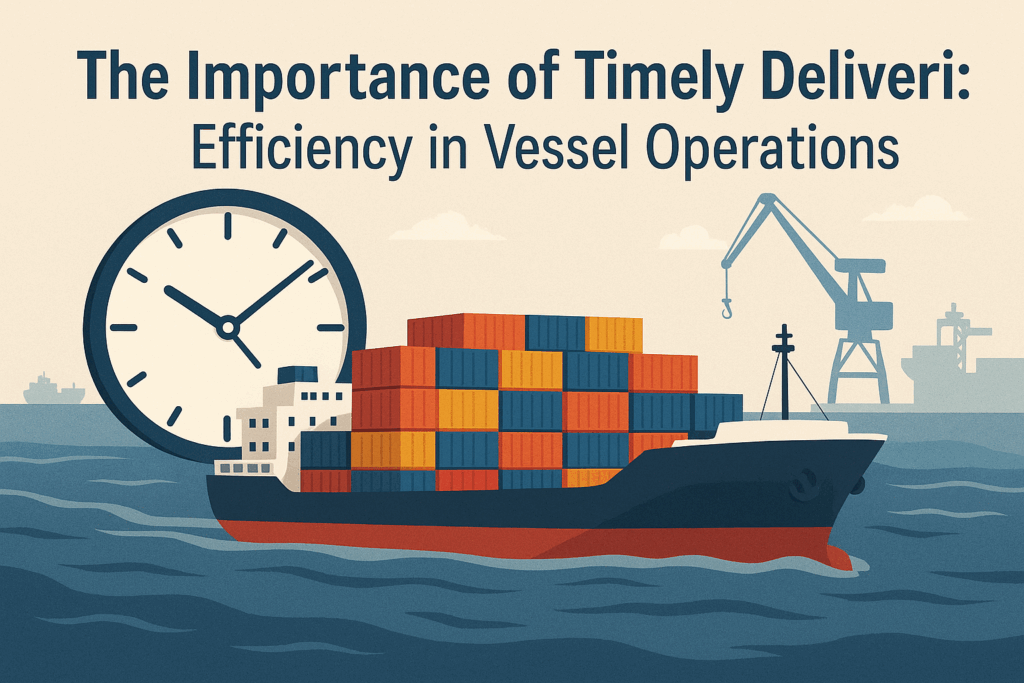The Unseen Necessity: Elevating Ship Operations Through Superior Cabin Hygiene
Life at sea presents unique challenges, and perhaps none is more fundamental yet often overlooked than maintaining a clean and hygienic living environment. A vessel isn’t just a workplace; it’s a confined, shared home for its crew, often for months on end. In this closed ecosystem, the standards of cleanliness within cabin and accommodation spaces transcend mere aesthetics. They are intrinsically linked to crew health, morale, safety, regulatory compliance, and even the physical preservation of the vessel itself. Investing in high-quality, appropriate cabin maintenance supplies isn’t an expense; it’s a critical investment in operational continuity and the well-being of the maritime professionals onboard. Let’s explore why prioritizing these supplies, sourced through a reliable partner like Astro Ship Supply, is paramount for any forward-thinking maritime operation.
From the galley to the sleeping quarters, bathrooms to recreational areas, every corner of a ship’s accommodation demands rigorous hygiene protocols. Failure to maintain these standards doesn’t just lead to unpleasant living conditions; it invites risks that can have severe repercussions for everyone onboard and the voyage’s success.
More Than Just Tidiness: The Strategic Pillars of Cabin Cleanliness
Why dedicate significant attention and resources to keeping accommodation spotless? The reasons are compelling and far-reaching.
H3: Safeguarding Crew Health: The First Line of Defense
Confined spaces are breeding grounds for infectious diseases. Viruses like Norovirus or influenza can spread rapidly through a crew, leading to:
- Widespread Illness: Incapacitating multiple crew members simultaneously, severely impacting the vessel’s operational capability and safety manning levels.
- Medical Costs & Diversions: Requiring potentially costly medical evacuations or voyage diversions to seek treatment ashore.
- Quarantine Measures: Necessitating strict isolation protocols, further straining resources and morale.
Effective cleaning and disinfection, using appropriate chemicals delivered reliably, are the primary barriers against such outbreaks. This includes rigorous hand hygiene practices, surface disinfection, and maintaining clean air circulation, all enabled by having the right cabin supplies readily available.
H3: Morale, Dignity, and Crew Retention
Living conditions speak volumes about how an organization values its people. Clean, well-maintained cabins and common areas contribute significantly to:
- Crew Comfort & Well-being: Providing a dignified and comfortable space for rest and recuperation after demanding work shifts.
- Positive Morale: Demonstrating care and respect, which boosts morale and fosters a more positive working atmosphere.
- Attracting & Retaining Talent: In a competitive crewing market, high standards of accommodation are a key factor in attracting skilled seafarers and reducing costly turnover. The Maritime Labour Convention (MLC, 2006) sets minimum standards, but exceeding them is a mark of a quality employer.
Neglected or unhygienic conditions, conversely, breed discontent, fatigue, and make crew feel undervalued, potentially leading to higher attrition rates.
H3: Preserving Asset Value: Protecting the Vessel Itself
Consistent cleaning does more than keep things looking good; it protects the physical structure and fittings of the vessel:
- Preventing Mold & Mildew: Especially crucial in humid marine environments, regular cleaning and ventilation (supported by clean filters and potentially dehumidifiers) prevent mold growth that can damage surfaces and pose health risks.
- Controlling Corrosion: Promptly cleaning spills and using appropriate, non-corrosive cleaners prevents damage to metal fixtures, decks, and bulkheads.
- Pest Infestation Management: Regular cleaning, proper waste disposal, and timely application of safe pest control products prevent infestations (rodents, insects) that can damage wiring, stores, and structures, besides being major hygiene hazards.
Maintaining the accommodation spaces helps preserve the vessel’s long-term value and reduces the need for costly repairs and refurbishments.
H3: Navigating Regulatory Compliance
International and flag state regulations mandate specific standards for onboard living conditions. Key considerations include:
- MLC, 2006 Requirements: This convention sets standards for accommodation size, heating, ventilation, sanitation facilities, lighting, and overall cleanliness.
- Port State Control (PSC) Inspections: PSC officers routinely inspect accommodation areas for compliance. Deficiencies related to hygiene, sanitation, or pest control can lead to observations, or even vessel detention if severe.
- Food Safety Regulations: Galley hygiene is intrinsically linked to food provision safety. Proper cleaning supplies and procedures are vital for passing health inspections.
Having documented cleaning schedules and readily available, compliant supplies demonstrates commitment to these regulations.
Stocking the Floating Home: A Comprehensive Guide to Cabin Supplies
Equipping a vessel requires a diverse range of cleaning and maintenance products tailored to the unique maritime environment. A well-stocked ship chandler specializing in cabin & accommodation supplies should offer:
| Category | Examples & Considerations | Key Areas of Use |
|---|---|---|
| General Cleaning Agents | All-purpose cleaners (pH neutral options best for versatility), heavy-duty degreasers, glass/window cleaners, floor cleaners (specific types for vinyl, tile, wood, etc.), stainless steel polish. | Cabins, corridors, common areas, bridges, galleys, messes. |
| Disinfectants & Sanitizers | Hospital-grade surface disinfectants (effective against viruses/bacteria), food-safe sanitizers (quat-based or similar), hand soaps (antibacterial/regular), alcohol-based hand sanitizers (min. 60-70% alcohol). Importance of contact time & dilution stressed. | Bathrooms, galleys, high-touch surfaces (door handles, railings), medical bays, cabins during/after illness. |
| Bathroom Care | Toilet bowl cleaners, descalers (for hard water buildup), mold & mildew removers, shower cleaners, drain cleaners (used cautiously). | Crew & officer bathrooms/heads, public toilets. |
| Galley Hygiene | Heavy-duty degreasers for ovens/stovetops, food-safe surface sanitizers, dishwashing detergents (manual/machine), pot scourers, cleaning cloths designated for galley use only. | Galleys, pantries, mess rooms. |
| Laundry & Linens | High-quality, durable bedding (sheets, pillowcases, blankets), towels, effective laundry detergents (liquid/powder, suitable for marine systems), fabric softeners (optional), stain removers. | Cabins, laundry facilities. |
| Waste Management | Appropriate size/type waste bins for different areas (general, galley, recyclable), durable bin liners/bags. Adherence to MARPOL waste segregation important. | Throughout accommodation, galley, deck areas. |
| Pest Control & Air Care | Marine-approved insecticides/larvicides (used per safety guidelines), rodent traps/baits, air fresheners, dehumidifier supplies (if applicable). | Cabins, storerooms, galleys, common areas (as needed, following safety protocols). |
| Tools & Equipment | Mops, buckets, brooms, dustpans, vacuum cleaners (and bags/filters), cleaning cloths (microfiber recommended), squeegees, spray bottles, gloves (appropriate types), safety goggles. | Used throughout all areas for applying cleaning agents. |
Note: Always consult Safety Data Sheets (SDS) before using any chemical product.
Quality vs. Cost-Cutting: A Tale of Two Vessels
The choice of cabin supplies has tangible consequences. Let’s compare two approaches:
H3: M/V ‘Prudence’: Investing in Quality Accommodation Supplies
The operators of M/V Prudence prioritize crew welfare and partner with a reputable chandler like Astro Ship Supply for their cabin & accommodation needs. They order proven, quality cleaning agents appropriate for marine environments, including effective disinfectants and eco-friendly options where viable. The Chief Steward implements a strict cleaning schedule, and crew are trained on proper chemical use.
Outcome: Cabins are consistently clean and fresh. Crew report high satisfaction with living conditions. During a minor flu outbreak, rigorous disinfection protocols contain the spread quickly. PSC inspections consistently note excellent accommodation standards. Surfaces remain undamaged, and pest issues are minimal. The investment in quality supplies pays off through better health, higher morale, and lower long-term maintenance costs.
H3: M/V ‘Shortcut’: The False Economy of Cheap Supplies
M/V Shortcut’s management focuses purely on the lowest price for supplies. They order generic, often harsh or ineffective cleaning chemicals. Disinfectants may not meet efficacy standards. Linens are thin and wear out quickly. Training on chemical use is minimal.
Outcome: A persistent smell of dampness and cheap air freshener permeates the accommodation. Crew complain about skin irritation from harsh chemicals and ineffective cleaning. Surfaces show signs of corrosion from inappropriate agents. A Norovirus outbreak spreads rapidly, incapacitating several crew members and forcing operational changes. During PSC inspection, deficiencies are noted for sanitation standards and pest presence in the galley. While initial supply costs were low, the costs associated with illness, low morale, potential detention, and surface damage far exceed the savings.
This comparison underscores that quality cabin supplies are not a cost center, but a critical component of risk management and operational efficiency.
Implementing Best Practices for Sustainable Cabin Hygiene
Having the right supplies is only part of the equation. Effective management is key:
- Robust Cleaning Schedules: Implement and enforce detailed daily, weekly, and deep-cleaning schedules for all accommodation areas, tailored to vessel type and crew size.
- Mandatory Training: Ensure all crew involved in cleaning understand product usage, dilution rates, contact times (especially for disinfectants), and crucially, safety precautions (reading SDS, using PPE). Check resources like the WHO’s Guide to Ship Sanitation for guidance.
- Smart Inventory Management: Maintain adequate stock levels of essential supplies, using a first-in, first-out system. Work with your chandler for timely, consolidated accommodation resupply to avoid urgent, costly spot orders.
- Promote Hand Hygiene: Make hand soap and sanitizers readily available and actively promote their use, especially before meals and after using bathrooms.
- Explore Greener Alternatives: Where effective and compliant, consider using certified eco-friendly cleaning products to minimize environmental impact, a growing consideration in the industry. Discuss options with your supplier.
- Feedback Mechanism: Encourage crew to report any hygiene concerns or supply needs promptly.
Quotable Checklist: Foundations of Onboard Hygiene Excellence
- Prioritize Health: Use effective disinfectants correctly to prevent illness spread.
- Value Your Crew: Provide clean, comfortable living spaces to boost morale and dignity.
- Protect Your Asset: Use appropriate cleaners to prevent damage from mold, corrosion, and pests.
- Ensure Compliance: Meet or exceed MLC, 2006 and flag state accommodation standards.
- Stock Strategically: Maintain adequate inventory of diverse, quality cleaning supplies and tools.
- Train Thoroughly: Ensure crew understands safe and effective use of all cleaning products.
- Choose Partners Wisely: Rely on experienced ship chandlers for quality products and reliable delivery. Get a quote for your specific needs.
Conclusion: Clean Cabins, Clear Sailing
The state of a vessel’s accommodation is a direct reflection of its operational standards and its commitment to the crew who are its lifeblood. Maintaining exceptional levels of cleanliness and hygiene through the consistent use of high-quality cabin maintenance supplies is not a chore, but a strategic imperative. It safeguards health, uplifts morale, ensures regulatory compliance, protects the vessel, and ultimately contributes to safer, smoother, and more profitable voyages.
Partnering with a knowledgeable and dependable ship chandler who understands the unique demands of the marine environment is crucial. They provide not just products, but peace of mind, ensuring your vessel is always equipped to maintain the highest standards of hygiene and crew welfare. Invest in cleanliness; invest in success. Contact Astro Ship Supply to discuss your vessel’s specific accommodation supply requirements.
Frequently Asked Questions (FAQ)
What are the most essential cleaning supplies every ship cabin should have?
While comprehensive stocking is needed, absolute essentials include: an effective all-purpose cleaner, a reliable disinfectant suitable for bathrooms and high-touch surfaces, toilet bowl cleaner, glass cleaner, hand soap, paper towels/cleaning cloths, and appropriate waste bins/liners. The specific needs will vary based on vessel type and routines.
How often should deep cleaning occur in ship accommodation areas?
Frequency depends on vessel policy, area usage, and crew rotation. However, a general guideline is for thorough deep cleaning of cabins during crew changeovers, and regular deep cleaning of common areas (galleys, messes, bathrooms, recreational rooms) on a weekly or bi-weekly basis, supplementing daily tidying and disinfection routines.
Are ‘eco-friendly’ cleaning supplies effective enough for marine use?
Many modern eco-friendly cleaning products are highly effective for general cleaning tasks. However, for critical disinfection, especially in galleys or during illness outbreaks, it’s vital to ensure the product meets required efficacy standards (e.g., proven virucidal/bactericidal activity). Check product certifications and discuss specific needs with your supplier like Astro Ship Supply, who can advise on suitable and compliant green options.
What is the best way to manage pest control onboard safely?
Integrated pest management is key. This involves: 1) Maintaining high cleanliness standards, especially in galleys and storerooms, to deny food sources. 2) Proper waste management. 3) Sealing potential entry points. 4) Using marine-approved pesticides/traps cautiously and strictly according to instructions (and SDS), often best handled by trained personnel. Regular inspections are vital for early detection.
How does a ship chandler ensure the quality of cabin supplies like linens and toiletries?
Reputable chandlers maintain quality by sourcing from trusted manufacturers, adhering to quality management systems (like ISO 9001), understanding vessel requirements (e.g., durability needed for marine laundry), and often offering different quality tiers to match operator budgets and standards. They should be able to provide specifications for items like thread count for linens or ingredients for toiletries upon request. Ordering through a trusted supplier minimizes the risk of receiving substandard goods.






